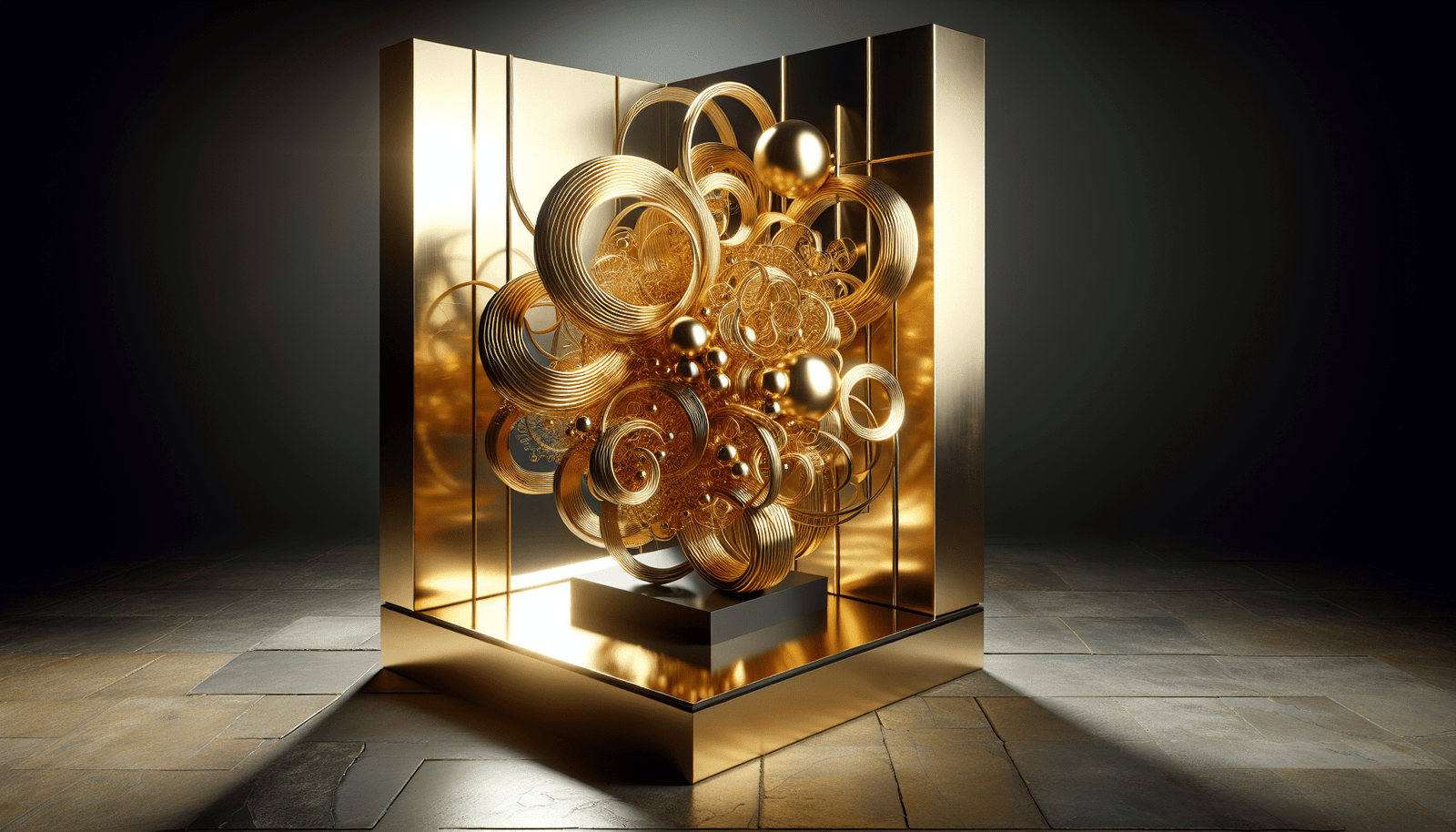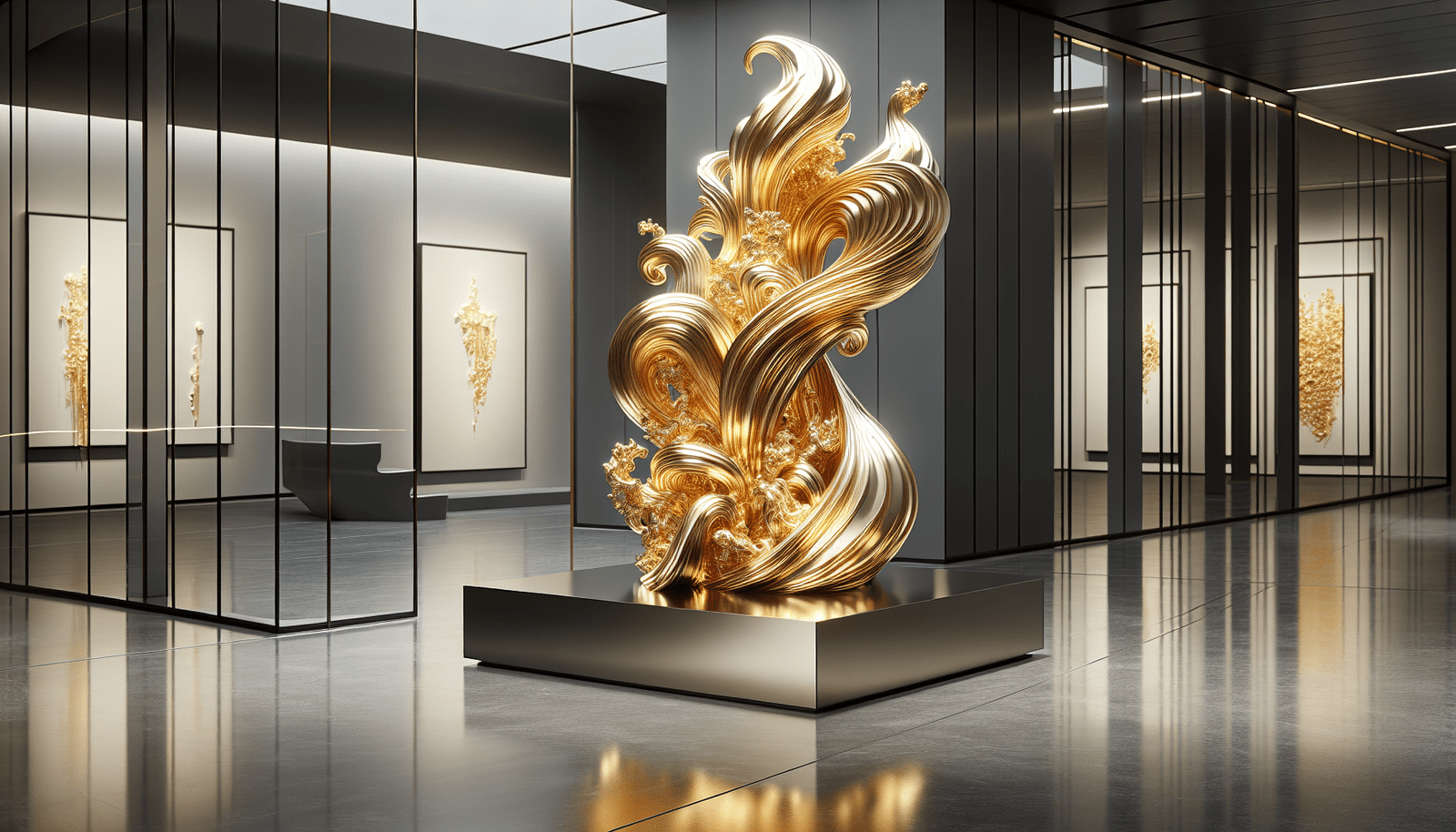Did you know that gold has been used in sculpture for centuries?
Introduction
Gold has played a significant role in the world of modern sculpture, adding value and beauty to pieces created by artists from around the globe. From ancient civilizations to contemporary art movements, this precious metal has been a symbol of wealth, power, and artistic excellence. In this article, we will explore the various ways in which gold is utilized in modern sculpture and how it contributes to the overall aesthetic of these artworks.
History of Gold in Sculpture
Gold has a long history of being used in sculpture, dating back to ancient civilizations such as the Egyptians, Greeks, and Romans. These cultures valued gold for its rarity and luster, using it to create statues, figurines, and other decorative objects. In more recent times, artists like Auguste Rodin and Constantin Brancusi incorporated gold into their sculptures, further solidifying its place in the art world.
Symbolism of Gold in Sculpture
Gold has always held a special significance in human history, symbolizing wealth, success, and extravagance. In sculpture, the use of gold can convey a sense of opulence and grandeur, elevating the artwork to a higher level of sophistication. Artists often use gold to highlight certain elements of their sculptures, drawing attention to specific details or creating a focal point for the viewer.
Types of Gold used in Sculpture
There are various types of gold that can be used in sculpture, each with its unique properties and characteristics. Artists can choose from pure gold, gold leaf, gold plating, or gold alloys, depending on their desired outcome and budget.
Pure Gold
Pure gold, also known as 24-karat gold, is the most malleable and ductile of all metals, making it ideal for intricate and delicate sculptural work. However, pure gold is also the softest and most expensive form of gold, making it less practical for larger sculptures or outdoor installations.
Gold Leaf
Gold leaf is thin sheets of gold that are applied to the surface of sculptures using an adhesive. This technique allows artists to achieve a rich, luminous finish that is both durable and cost-effective. Gold leaf can be easily manipulated and shaped, making it a popular choice for artists looking to add a touch of luxury to their creations.
Gold Plating
Gold plating involves coating a base metal or material with a thin layer of gold through a chemical or electroplating process. This method is often used to create sculptures that have the appearance of solid gold without the high cost. Gold plating is durable and long-lasting, making it suitable for sculptures that will be displayed outdoors or in public spaces.
Gold Alloys
Gold alloys are mixtures of gold with other metals, such as copper, silver, or zinc, to create a more durable and affordable material for sculpture. Alloys allow artists to manipulate the color, hardness, and texture of the gold, giving them greater control over the final appearance of their work. Gold alloys are commonly used in large-scale sculptures and architectural installations, where pure gold would be impractical.

Techniques for Working with Gold in Sculpture
Working with gold in sculpture requires a unique set of skills and techniques to achieve the desired effect. Artists must consider factors such as the type of gold being used, the size and scale of the sculpture, and the intended placement of the artwork. Whether casting, carving, or applying gold to the surface of a sculpture, each technique has its challenges and rewards.
Casting
Casting is a common technique used in sculpture to create replicas of a model or original design. In the case of gold sculptures, artists can cast molten gold into a mold to produce intricate and detailed forms. The casting process allows for the creation of multiple copies of the same sculpture, making it an efficient and cost-effective method for producing gold artworks.
Carving
Carving is a traditional method of sculpting that involves removing material to reveal a form or shape. When working with gold, artists must use specialized tools and techniques to prevent the metal from warping or breaking. Carving allows for greater precision and detail in the final sculpture, giving artists the ability to create intricate patterns and textures that enhance the beauty of the gold.
Surface Decoration
Surface decoration involves applying gold to the surface of a sculpture to enhance its appearance and create visual interest. Artists can use techniques such as gilding, embossing, or engraving to add depth and dimension to their work. Surface decoration is often used in combination with other techniques to highlight specific areas of the sculpture and draw attention to important details.
Iconic Gold Sculptures Throughout History
Throughout history, there have been many iconic sculptures that incorporate gold in innovative and creative ways. These artworks have stood the test of time, inspiring generations of artists and art enthusiasts with their beauty and craftsmanship. Below are a few examples of iconic gold sculptures that have made a lasting impact on the world of art.
“The Golden Buddha” – Thailand
One of the most famous gold sculptures in the world is the Golden Buddha in Thailand, which is made entirely of solid gold and weighs over five tons. The statue is revered for its intricate detailing and spiritual significance, attracting millions of visitors each year to witness its beauty and grandeur.
“The Gates of Paradise” – Italy
“The Gates of Paradise” is a set of bronze doors created by Italian sculptor Lorenzo Ghiberti, which are adorned with intricate gold leaf designs. These doors are considered one of the masterpieces of the Renaissance period, showcasing the skill and artistry of the sculptor in combining metalwork with decorative elements.
“Aphrodite of Knidos” – Greece
The “Aphrodite of Knidos” is a marble sculpture of the Greek goddess Aphrodite that was once adorned with gold jewelry and accessories. This iconic artwork is known for its graceful pose and lifelike appearance, capturing the essence of beauty and femininity in ancient Greek culture.

Contemporary Artists using Gold in Sculpture
In the world of contemporary art, many artists are pushing the boundaries of traditional sculpture by incorporating gold into their work in innovative and unexpected ways. These artists use gold as a medium to explore themes of luxury, power, and materialism, creating provocative and thought-provoking pieces that challenge the viewer’s perception of art.
Damien Hirst
British artist Damien Hirst is known for his controversial and provocative artworks that often explore themes of life, death, and consumer culture. In his series “The Golden Calf,” Hirst created a sculpture of a calf suspended in formaldehyde and covered in gold leaf, challenging the viewer to confront their own mortality and the pursuit of wealth.
Yinka Shonibare
Nigerian-British artist Yinka Shonibare is renowned for his playful and colorful sculptures that address themes of identity, globalization, and colonialism. In his series “Fake Death Picture,” Shonibare used gold-plated resin to create life-sized sculptures of people in various poses of death, blurring the line between reality and artifice.
Jeff Koons
American artist Jeff Koons is known for his larger-than-life sculptures that celebrate popular culture and consumerism. In his iconic work “Balloon Dog,” Koons created a sculpture of a large, reflective dog covered in metallic gold, capturing the playful and whimsical spirit of his art.
Conclusion
In conclusion, gold plays an essential role in the world of modern sculpture, enriching artworks with its beauty, value, and symbolism. From pure gold to gold leaf, artists have a range of options to choose from when incorporating gold into their sculptures, allowing for endless possibilities and creativity. By understanding the history, types, techniques, and iconic examples of gold sculptures, you can appreciate the significance and impact of this precious metal in the art world. Next time you encounter a gold sculpture, take a moment to appreciate the intricate craftsmanship and artistic vision behind it. The role of gold in modern sculpture is truly a testament to the enduring beauty and allure of this timeless metal.
